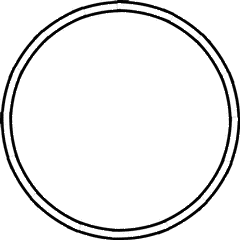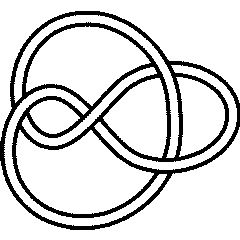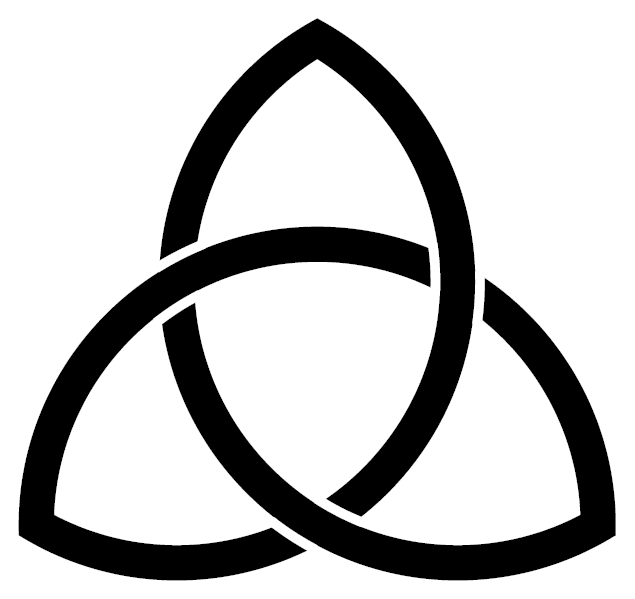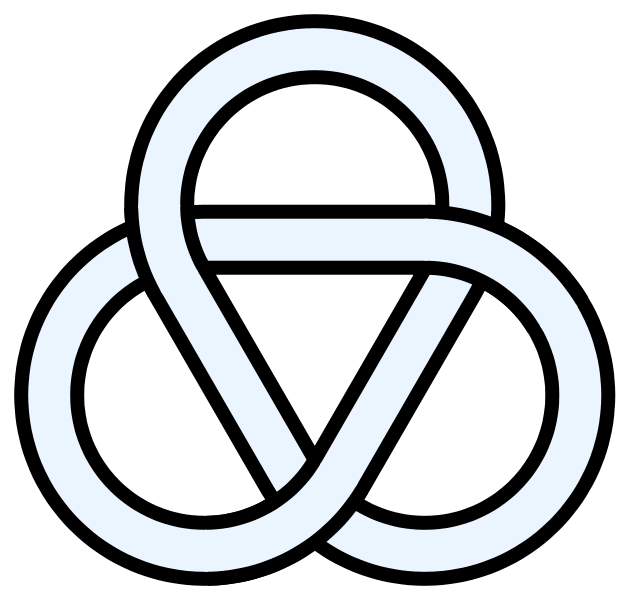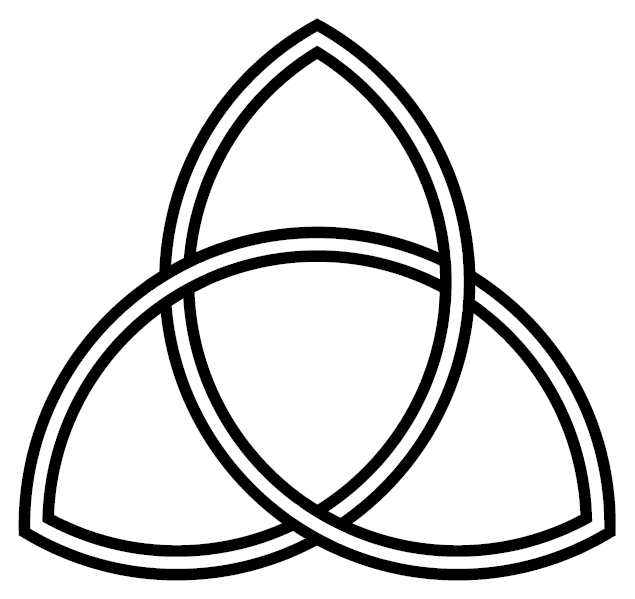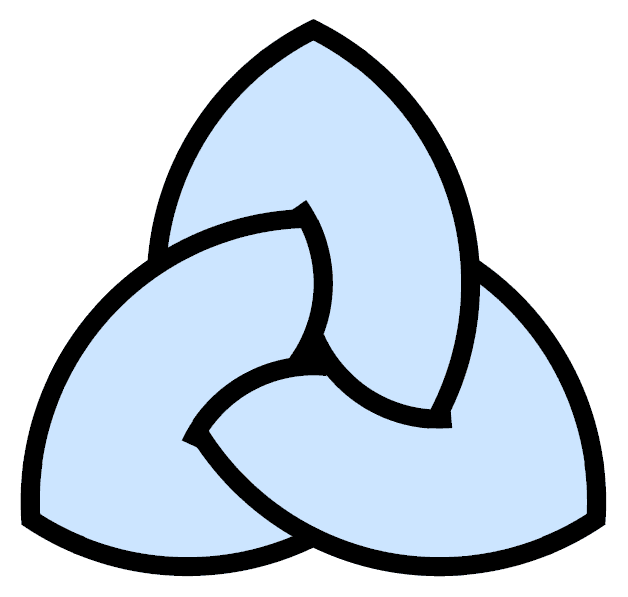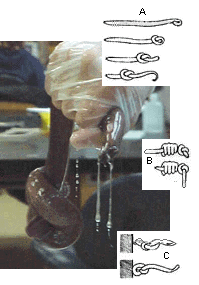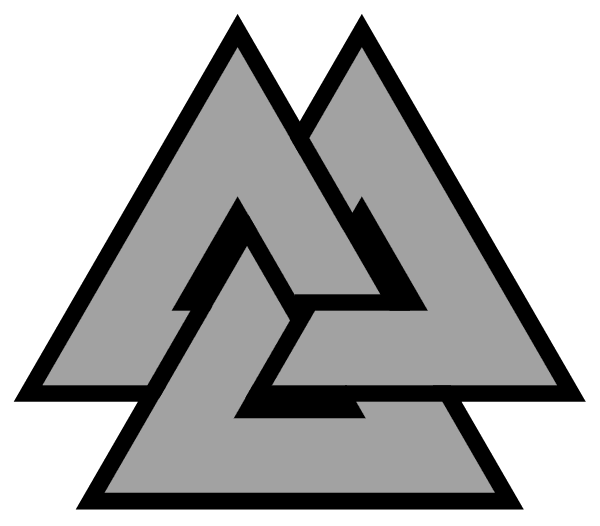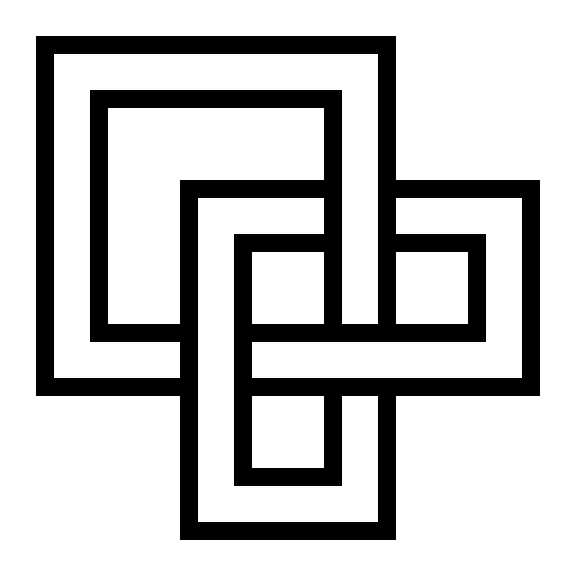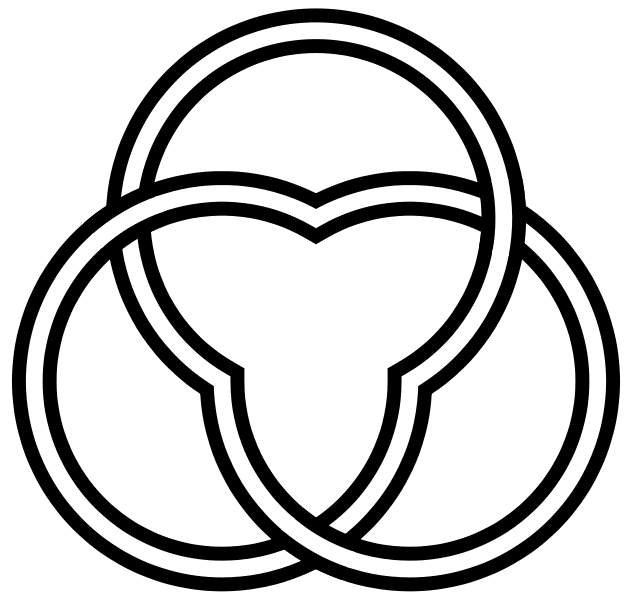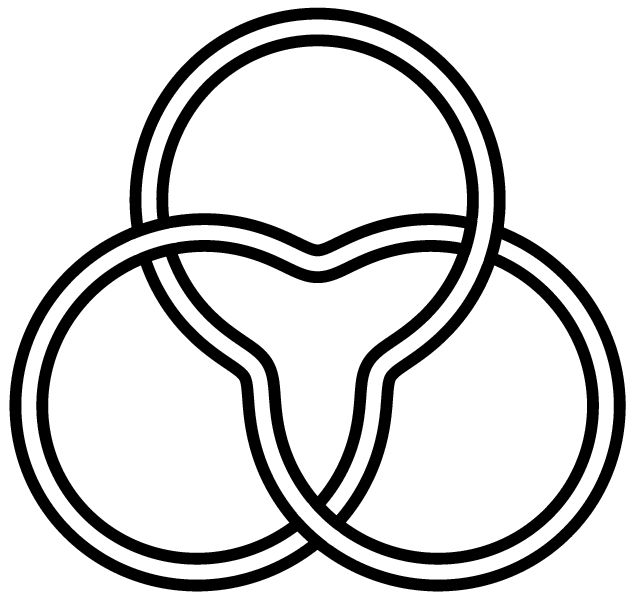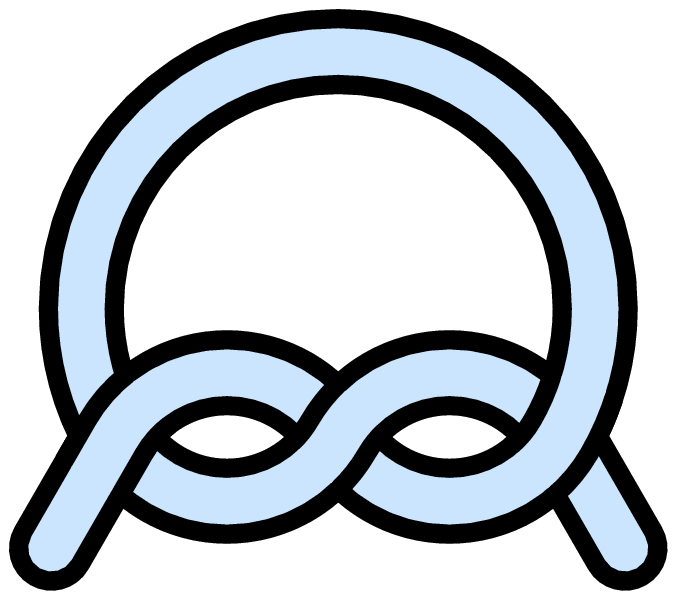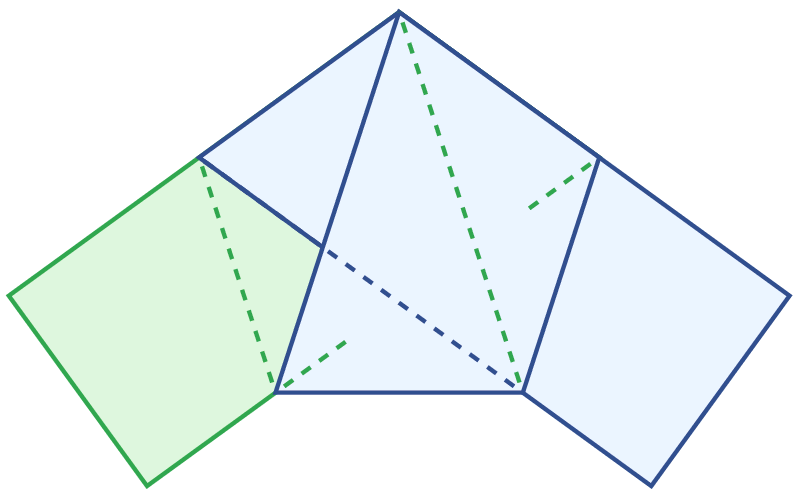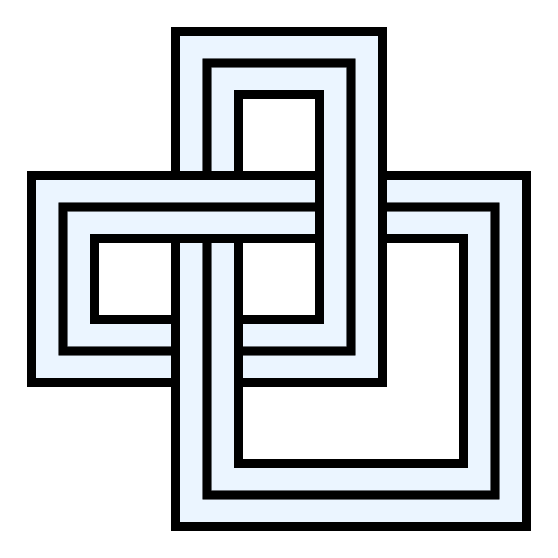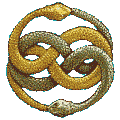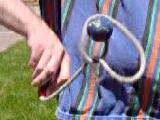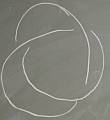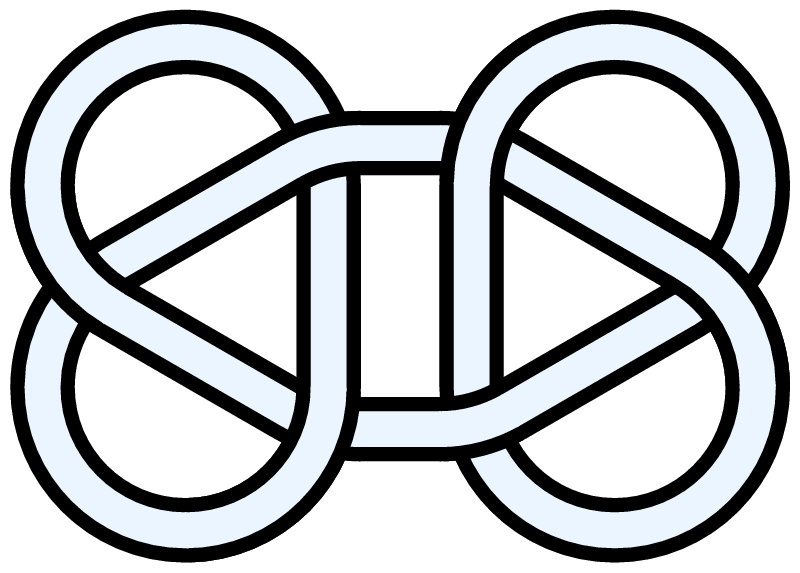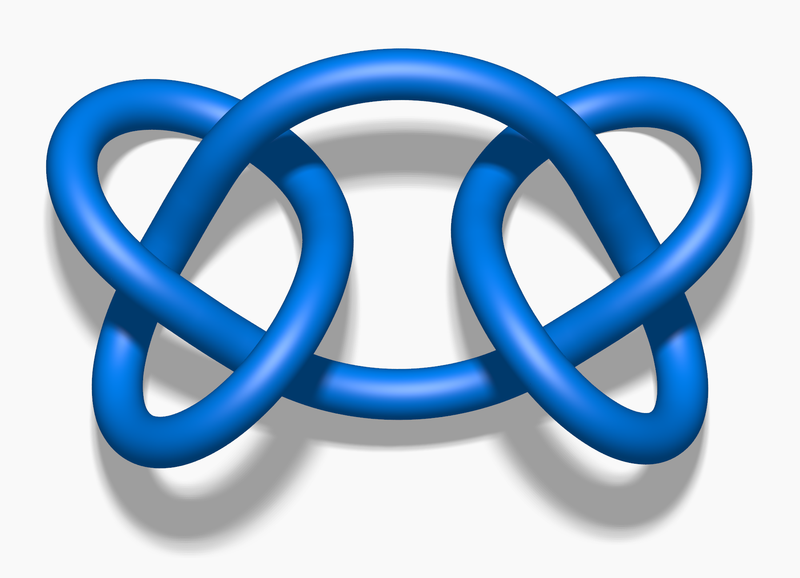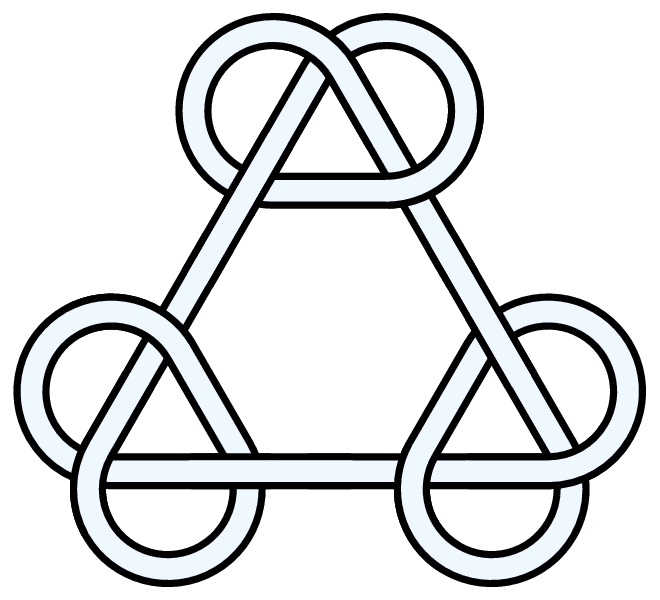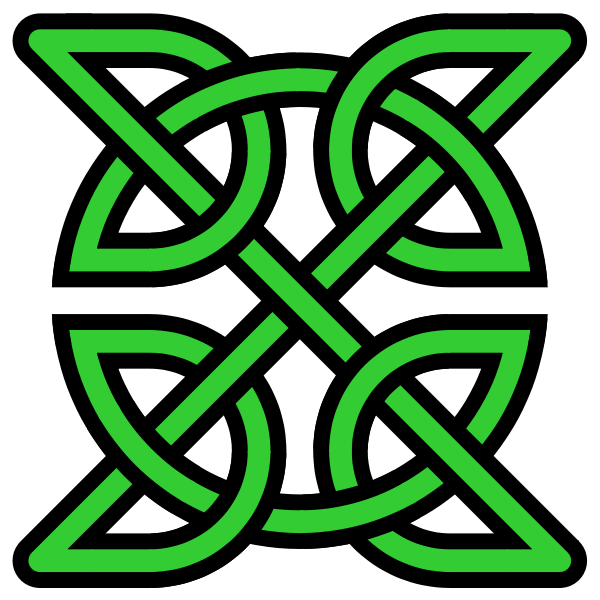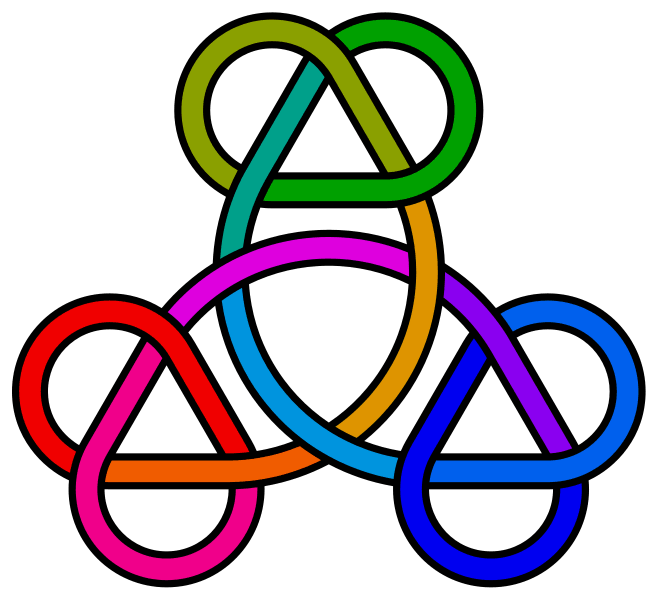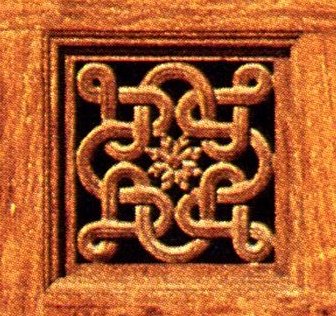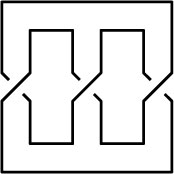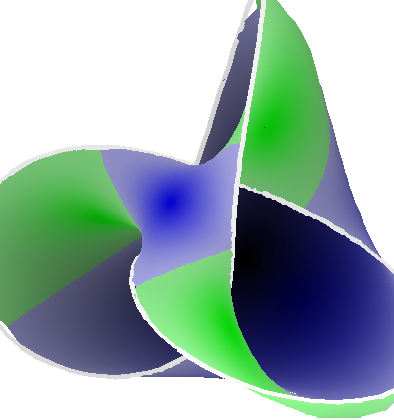3 1
{{Rolfsen Knot Page]], which actually produces this page. {{Rolfsen Knot Page]] setting the values of all the parameters appropriately.
|
|
|
 (KnotPlot image) |
See the full Rolfsen Knot Table. Visit 3 1's page at the Knot Server (KnotPlot driven, includes 3D interactive images!) |
|
3_1 is also known as "The Trefoil Knot", after plants of the genus Trifolium, which have compound trifoliate leaves, and as the "Overhand Knot". See also T(3,2). |
The trefoil is perhaps the easiest knot to find in "nature", and is topologically equivalent to the interlaced form of the common Christian and pagan "triquetra" symbol [12]:
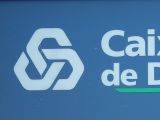 Logo of Caixa Geral de Depositos, Lisboa [1] |
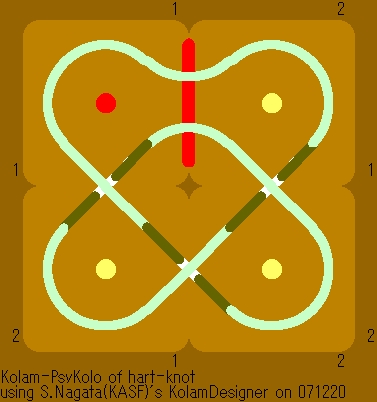 A knot consists of two harts in Kolam [2] |
Knot presentations
| Planar diagram presentation | X1425 X3641 X5263 |
| Gauss code | -1, 3, -2, 1, -3, 2 |
| Dowker-Thistlethwaite code | 4 6 2 |
| Conway Notation | [3] |
| Minimum Braid Representative | A Morse Link Presentation | An Arc Presentation | ||
Length is 3, width is 2, Braid index is 2 |

|
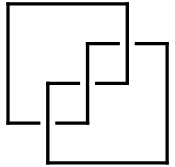 [{5, 2}, {1, 3}, {2, 4}, {3, 5}, {4, 1}] |
[edit Notes on presentations of 3 1]
Three dimensional invariants
|
[edit Notes for 3 1's three dimensional invariants] The rope length of the trefoil is known to be no more than 16.372, by numerical experiments, while the sharpest known lower bound (actually applicable to all non-trivial knots) is 15.66. The trefoil is a fibered knot! A java applet demonstrating it, written by Robert Barrington Leigh at the University of Toronto, is here. |
Four dimensional invariants
|
Polynomial invariants
"Similar" Knots (within the Atlas)
Same Alexander/Conway Polynomial: {}
Same Jones Polynomial (up to mirroring, ): {}
Vassiliev invariants
| V2 and V3: | (1, -1) |
| V2,1 through V6,9: |
|
V2,1 through V6,9 were provided by Petr Dunin-Barkowski <barkovs@itep.ru>, Andrey Smirnov <asmirnov@itep.ru>, and Alexei Sleptsov <sleptsov@itep.ru> and uploaded on October 2010 by User:Drorbn. Note that they are normalized differently than V2 and V3.
Khovanov Homology
| The coefficients of the monomials are shown, along with their alternating sums (fixed , alternation over ). The squares with yellow highlighting are those on the "critical diagonals", where or , where -2 is the signature of 3 1. Nonzero entries off the critical diagonals (if any exist) are highlighted in red. |
|
| Integral Khovanov Homology
(db, data source) |
|
